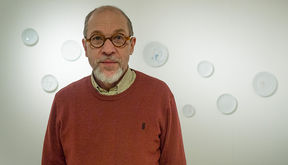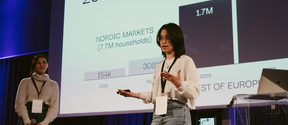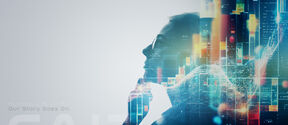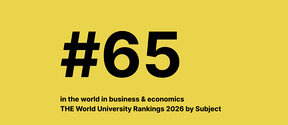Professor Tapio Yli-Viikari: Thirty years in a vantage point to Finnish ceramics

The farewell seminar of Tapio Yli-Viikari, Professor of Ceramic and Glass Design at the School of Arts, Design and Architecture, brought together a large number of his colleagues, partners, students and loved ones. Yli-Viikari is retiring after a 30-year career as a professor, but he is already looking to the future and packing his bags for a study visit to China.
Yli-Viikari graduated from the University of Industrial Arts Helsinki in 1974. In that era, the Finnish ceramic industry was dominated by Arabia, a company ahead of its time in many ways.
I came into this field at a time when the Finnish ceramics industry was undergoing a powerful transformation. In keeping with the ideals of modernism, the trend was to produce everyday objects from authentic materials for the citizens that were inexpensive and more practical than before, Professor Yli-Viikari reminisces.
Ardently ethical thinking with aspirations for social development and improving the welfare of the nation prevailed in design. At Nuutajärvi glass factory, Yli-Viikari was introduced to the radical teachings of designer Kaj Franck.
Franck said: blow up the dinner sets, let’s do something completely new. In 1978, I moved to Arabia, a company on which Franck’s heritage had left a strong mark, and this ideology became strongly ingrained in me.
The results can be seen in the kitchens of many Finnish homes. In 1978, Yli-Viikari’s range of Kokki cooking pots earned him the State Award for Design. Yli-Viikari’s Uunikokki oven dishes also became classics of Finnish design and culinary culture.
Yli-Viikari started his career as Professor of Ceramics and Glass Design in 1986. In his subsequent work, he has carried on the ideology that puts ethical design for the good of the nation at the centre.
Over the last thirty years, Finland has reached a standard of living that is second to none in the world. While we have a little bit too much of everything today, we also have many global problems. Design should now find causes that are equally important as those highlighted when building the nation's welfare in the 1950s. We need a global attitude.
Digital design
The year 2016 marked a revolution in the Finnish traditions of ceramics manufacture, as production that started at Arabia’s factory in 1873 was discontinued and the machines came to a standstill.
The special expertise of Finnish factories has been our strength. We have now lost this competitive advantage. In addition to traditional skills, today’s designer is expected to have logistics design competence and communication skills, as the goods may be manufactured on the other side of the globe.
Ceramics and its Dimensions is a European project that investigates the future of ceramics through new techniques and a rethinking of the material. The Department of Design leads one of its sub-projects, which culminated in the exhibition Shaping the Future held in Fiskars. In the pre-exhibition workshops, the participants created innovations using 3D printing, and even children got an opportunity to draw dishes that were then printed. From Fiskars the exhibition will go on a tour of six European cities.
In 3D printing, an object is turned into digital data in one design step. As the data can be transmitted to anywhere in a heartbeat, manufacturing no longer needs to take place locally.
It is possible that factories in the old sense will disappear, and printing stations of different materials will emerge in the world. The products will no longer be Made in Finland but Designed in Finland.
Focus on China
When he was a student, Yli-Viikari was interested in Japanese culture and the Silk Road. As a professor he has brought his students to ceramics factories and exhibitions round the world. Understanding different cultures has also had an important role in everyday teaching, for example when tea ceremonies were conducted in the classroom.
Yli-Viikari has also visited China on a yearly basis since 1995.
On every trip, I find a new China. Every time I learn something new and gain a better understanding of its culture from inside out. And when you travel far, you can also see things close by. Finnish design has unique characteristics that you cannot find elsewhere.
In 2014, Yli-Viikari was admiring the great mountains that surround the ceramics city of Jingdezhen in Southern China, when he started visualising parts of a tea set. He created unique objects to which the audience at the farewell seminar was introduced. An exhibition titled A Humble Administrator’s Garden mounted outside the lecture hall recalled Yli-Viikari’s artistic production.
Read more news

Aalto University to host INNOVA Europe 2026 Grand Final in Espoo
Aalto University will host the INNOVA Europe 2026 Grand Final in Espoo, bringing together leading student-led startups from European universities.
Finnish AI Region Secures Second Term with Top Marks from EU
Finnish AI Region (FAIR) EDIH has been selected to continue operations for a second term with excellent ratings. European Union continuation funding enables service expansion from the beginning of 2026. Aalto University is one of 10 partners in FAIR.
Business & economics and computer science ranked in top 100 globally
The Times Higher Education ranking measures universities with 18 indicators, including international research and citations






